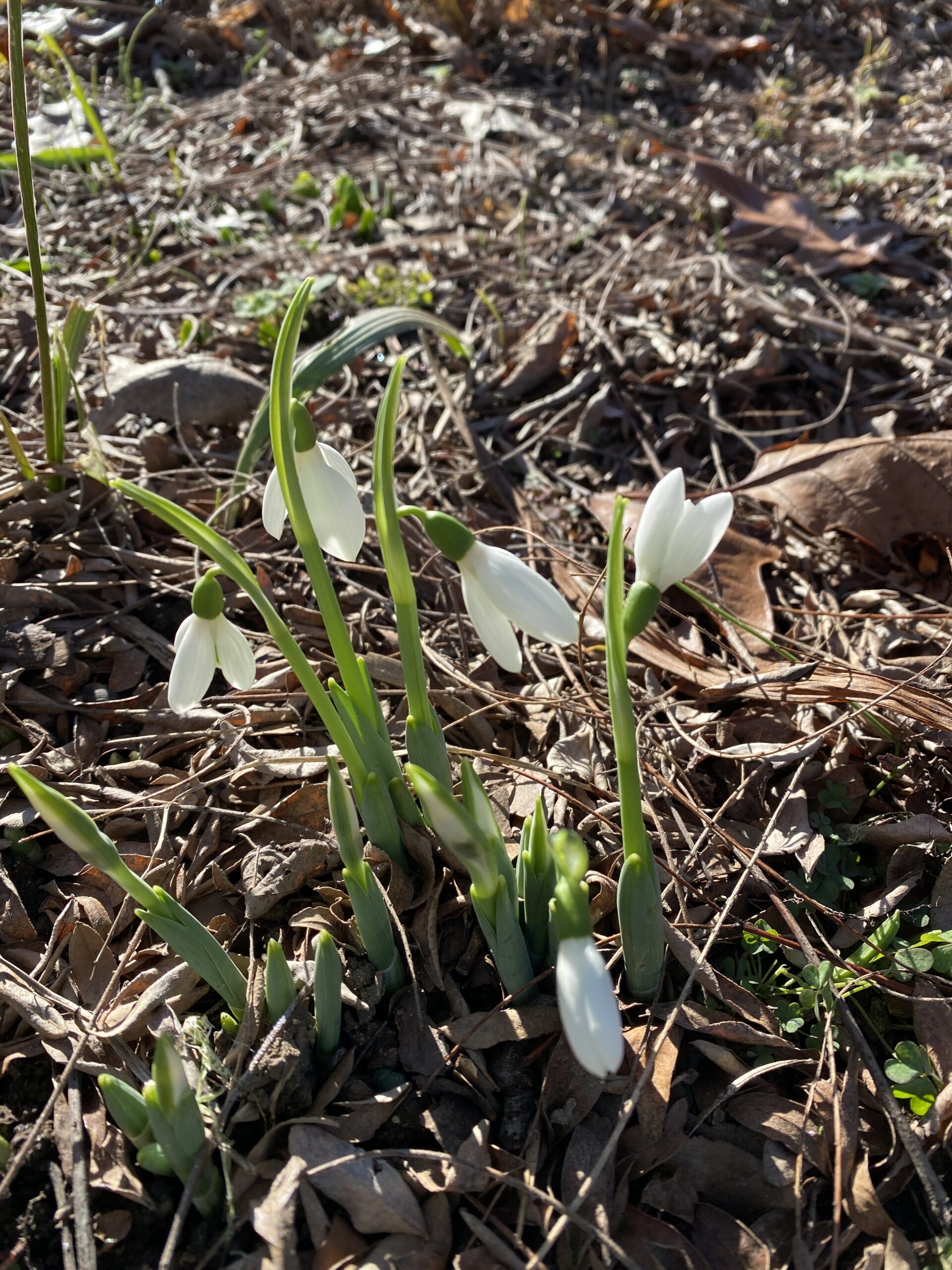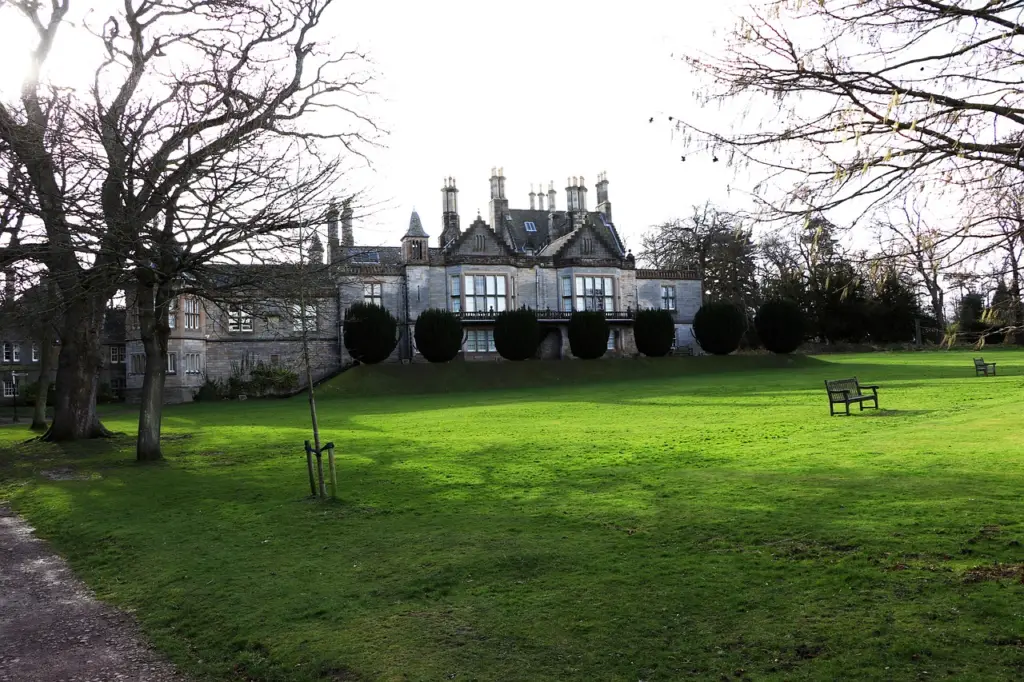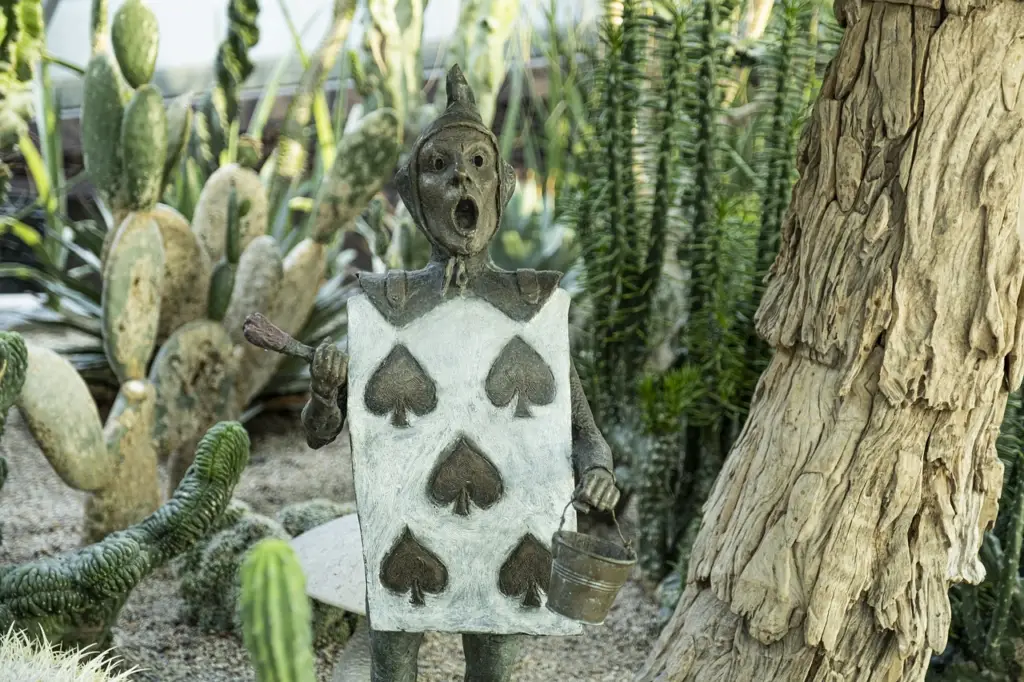[ad_1]
Although native crops lend themselves to informal reveals just like this combination of paper birch (Betula papyrifera) and Carolina lupines (Thermopsis villosa), the impression might be pretty elegant. And maintenance, as quickly because the natives haves established themselves, is usually far a lot much less demanding than that of typical imported yard plantings. {Photograph} by Larry Weaner.
I like Marianne Willburn’s expertise as a creator and her devotion to the craft I like. Nonetheless I was disenchanted by her newest put up on this web site, “Native Vegetation as a Moral Problem? Ponder Me Chief Heretic.”
The aim implicit throughout the title is that Marianne has apparently been criticized about her preferences referring to native versus launched plant species. Who, I am questioning, has been attacking her? I’ve been involved with the native crops movement within the USA as a result of the late 1980’s, and my experience has been that whereas native crops followers choose to share particulars concerning the environmental suppliers their flora can current, none have steered to me that it is fallacious to take pleasure in non-invasive launched crops as successfully. I’m sure there are some purists of this sort available on the market, nonetheless in 35 years, I’ve not encountered them. I had lunch ultimate week with Larry Weaner, one among many pioneers of ecological gardening, and he talked about the similar.
Marianne makes a reference to the savaging of reputations on-line, and probably that is the place she has encountered the orthodoxy she dislikes. All I can say to that is that anyone who has ever posted any opinion on social media has encountered that type of treatment – the Net is a favorite gathering place for people who would have been mailing poison pen letters a period previously. I moreover assume that evaluating the native plant dissenter to Galileo is a bit extreme, notably as what follows in Marianne’s put up is mainly science-free.

A rich provide of meals for songbirds, staghorn sumac is aggressive nonetheless might be an ally when you search to purge a panorama of invasive crops. {Photograph} by Larry Weaner.
Marianne did elevate some respected questions on such new mannequin gardens. For instance, why must a staghorn sumac (Rhus typhina) be considered preferable to a tree of heaven (Ailanthus altissima)? The ailanthus is an aggressive spreader, nonetheless then so is the sumac. From an aesthetic perspective, every are significantly coarse in look. To be trustworthy, I’ve actually seen ailanthus, an import from China, actually helpful as an ornamental in British gardening books, and as a Brooklyn pal and passionate gardener asserted to me as quickly as, any tree which will flourish in an unfriendly concrete cityscape just like her neighborhood deserves some respect.
If Marianne had consulted an ecologist, nonetheless, she would have found some pertinent particulars. The fruits of the staghorn sumac – a north American native – feed spherical 300 species of North American songbirds; I’ve found solely two North American chook species cited as feeding on the seeds of the ailanthus. Most would agree that’s an obligatory distinction in a time when our songbird populations are crashing.
Every timber are moreover quick to colonize disturbed web sites, an obligatory service instantly when now we’ve ravaged lots of our nationwide panorama. There’s a distinction of their impacts, though. In response to a Forest Service report regarding the sumac, by shading and reducing groundcovers, the sumac seems to spice up the enlargement of tree seedlings, serving as a optimistic step throughout the pure succession once more to a blended and richer flora. The ailanthus, in distinction, is like many various invasive, non-native crops in that it is allelopathic. It infiltrates the soil with chemical substances that deter the enlargement of various crops, which has the impression of decreasing native biodiversity. A scarcity of plant biodiversity has a drastic impression on the native wildlife by robbing bugs of plant species they rely on for meals, and a scarcity of bugs (whose populations are moreover crashing worldwide) deprives animals farther up the meals chain of meals on which they rely.

Native crops match merely proper right into a designed panorama just like this one which mixes help for the ecosystem with comfort and pleasure for its householders. {Photograph} by Larry Weaner.
Marianne moreover signifies that in a time when the pure world is so challenged by native climate change and habitat degradation, we must always at all times welcome any “adaptive” crops which will flourish throughout the face of such difficulties whatever the place they originated. That too conflicts with the views of most ecologists. As is often really useful by the excellence between the sumac and the ailanthus, plant and animal relationships are extraordinarily specific. Vegetation evolve toxins to discourage plant-eating animals (herbivores), and the herbivores indigenous to the similar house steadily evolve a tolerance for these toxins so that they’ll proceed to eat these particular crops. Over time, a given species of herbivore often develops a dependence on a particular species or a gaggle of related species of crops. That is the rationale so many imported, non-native crops are marketed as “pest resistant” – our North American bugs cannot eat the imported crops with their unfamiliar toxins. The online consequence’s that the pest resistant imports play no or a much-reduced operate in supporting the native ecosystem. When an import proves invasive and jumps the yard fence to invade the neighbors’ properties and adjoining wildlands, every one in all its individuals represents a small diminishment of the ecosystem’s talent to help itself. The cumulative impression might be, and typically is, devastating.
Nonetheless as Marianne asserts, the imported crops can evolve to mix themselves throughout the pure meals chain. That is true, nonetheless the knowledge collected by most ecologists level out that that’s often a very sluggish course of, one which usually takes centuries or millennia. There are exceptions, in reality. Dr. Arthur Shapiro, a distinguished professor emeritus on the School of California Davis (and an entomologist extraordinarily regarded by his colleagues) contacted me after I revealed an episode on my “Rising Greener” podcast whereby I discussed with Dr. Douglas Tallamy the restrictions of invasive imports just like butterfly bush (Buddleja davidii) as a help for North American butterflies and moths. Dr. Tallamy well-known that whereas the buddleja does current nectar to feed the adults, the bush does not current a hospitable habitat for his or her caterpillars.

Butterfly weed (Asclepias tuberosa) an area all by the jap United States and in our Southwest, lives as a lot as its establish, attracting hosts of grownup butterflies with its nectar and, crucially, moreover serving as a bunch plant for caterpillars of monarch, grey hairstreak, and queen butterflies. {Photograph} by Larry Weaner.
Dr. Shapiro educated me by means of e-mail that he had seen two subspecies of a particular native butterfly elevating caterpillars effectively on Buddleja davidii in California. As soon as I checked I found that Buddleia davidii was launched into North American gardens throughout the early 1900’s, so the variation of merely two butterfly subspecies in over a century reinforces how sluggish this implies of adaptation is. Our ongoing, giant lack of habitat and the accompanying wave of imminent extinctions is an immediate draw back (one now we’ve launched on ourselves) and besides we want to experience the horrors of worldwide ecological collapse, we’ve to take movement now.
Nonetheless with native climate change already destabilizing ecosystems worldwide, probably we must always at all times merely be pleased about any crops that flourish in our landscapes? What is the relevance of “native” anymore? That’s an argument I’ve often heard from people who would deny the actual suppliers that regionally superior crops can present to the native ecosystem, and Marianne referred to it in her put up. Help for this place, nonetheless, bespeaks a lack of expertise that crops do not develop naturally as individuals nonetheless considerably as members of communities.
We’re solely beginning to grasp the subtleties of how co-evolved crops and animals cooperate in these pure communities. It’s solely in newest a few years, as an illustration, that now we’ve glimpsed how the crops in such a context speak by means of fungal populations throughout the soil and chemical substances they launch into the air. What we do know is that arbitrarily chosen plant imports often do not mix efficiently into such strategies. They may flourish individually nonetheless do little or nothing for the success of the native flora as a complete. That is the rationale the mainstream of ecologists endorse attempting to help plant communities by sustaining or restoring their pure biodiversity. This may occasionally assist their talent to evolve as a result of the native climate modifications.
I strongly think about that gardening is personal and that every one among us ought to use the craft as we like, so long as we don’t do one factor that endangers our neighbors or the pure world on which we rely. When you choose a traditional methodology that focuses solely on aesthetics, mingling crops from in every single place on the earth in a pre-determined design you’ve got drawn up on paper, that is your correct and no person must criticize you so long as you don’t make your yard an entry degree for invasive species.
I need that Marianne was a bit further open-minded on this respect. In her put up she proposed that the native plant assemblage she was visiting didn’t deserve the title of yard the least bit. She refers to what she perceives as a shortage of “human imaginative and prescient, data, expertise, artistry, and stewardship.” I’ve not visited that yard, nonetheless most native crops followers I do know do embody a precedence for aesthetics and human comfort of their work. Larry Weaner’s panorama designs have achieved the nice recognition they take pleasure in on account of he is alert to those factors along with to the effectively being of native ecosystems.

Cardinal flower is usually thought-about a quick lived pleasure, nonetheless Larry Weaner’s ecologically educated administration ensures a self-renewing crop of seedlings on this terrace. Letting crops uncover their very personal niches can lead to such exuberant if unpredictable beauties. {Photograph} by Larry Weaner.
Furthermore, if I allow the crops in my meadow to hunt out their very personal spots and patterns, that does not indicate there is no such thing as a such factor as a order or development to this type of yard. There’s an enchanting pure order in how the completely completely different species relate to the topography, soil, and each other. It took some re-education for a traditionally expert gardener just like myself to find methods to study this, nonetheless I now uncover it very satisfying to work with Nature considerably than merely imposing my tastes on it as I was taught.
And Marianne quite the opposite, the model new mannequin of design I am finding out doesn’t finish in chaos and large portions of repairs. While you be taught to evaluate and respect the dynamics of the native ecosystem in your design, and must you accept that an ecologically impressed yard goes to evolve and alter over time, usually yow will discover the outcomes much more sustainable every in the case of inputs just like water, fertilizer, and pesticides, and in the case of labor, than attempting to implement a static planting plan and web internet hosting a cosmopolitan botanical menagerie in your web site.
Is “religiosity” and a necessity to advertise ourselves truly on the coronary coronary heart of the current enthusiasm for native crops as Marianne asserts? It seems to me to be based totally considerably on a must work collectively in a further optimistic and complicated method with our environment. I uncover such satisfaction and pleasure in pursuing a higher understanding of the ecology of my house and making a yard that authentically shows the pure beauties of my house. There’s nonetheless room for the hybrid roses and the heirloom cider apples I like. There’s a singular thrill, though, in watching all the butterflies, moths, amphibians, snakes, and birds who uncover meals and habitat in what was beforehand backyard and now’s my meadow. That has grow to be the middle of my gardening.
[ad_2]
Provide hyperlink
- 3 Indicators Your Onions Are Able to Harvest – Backyard Betty - 1 July 2025
- Planting Methods & Seasonal Upkeep [6.14.25] - 19 June 2025
- June However Nonetheless Not Actually Summer time - 19 June 2025


